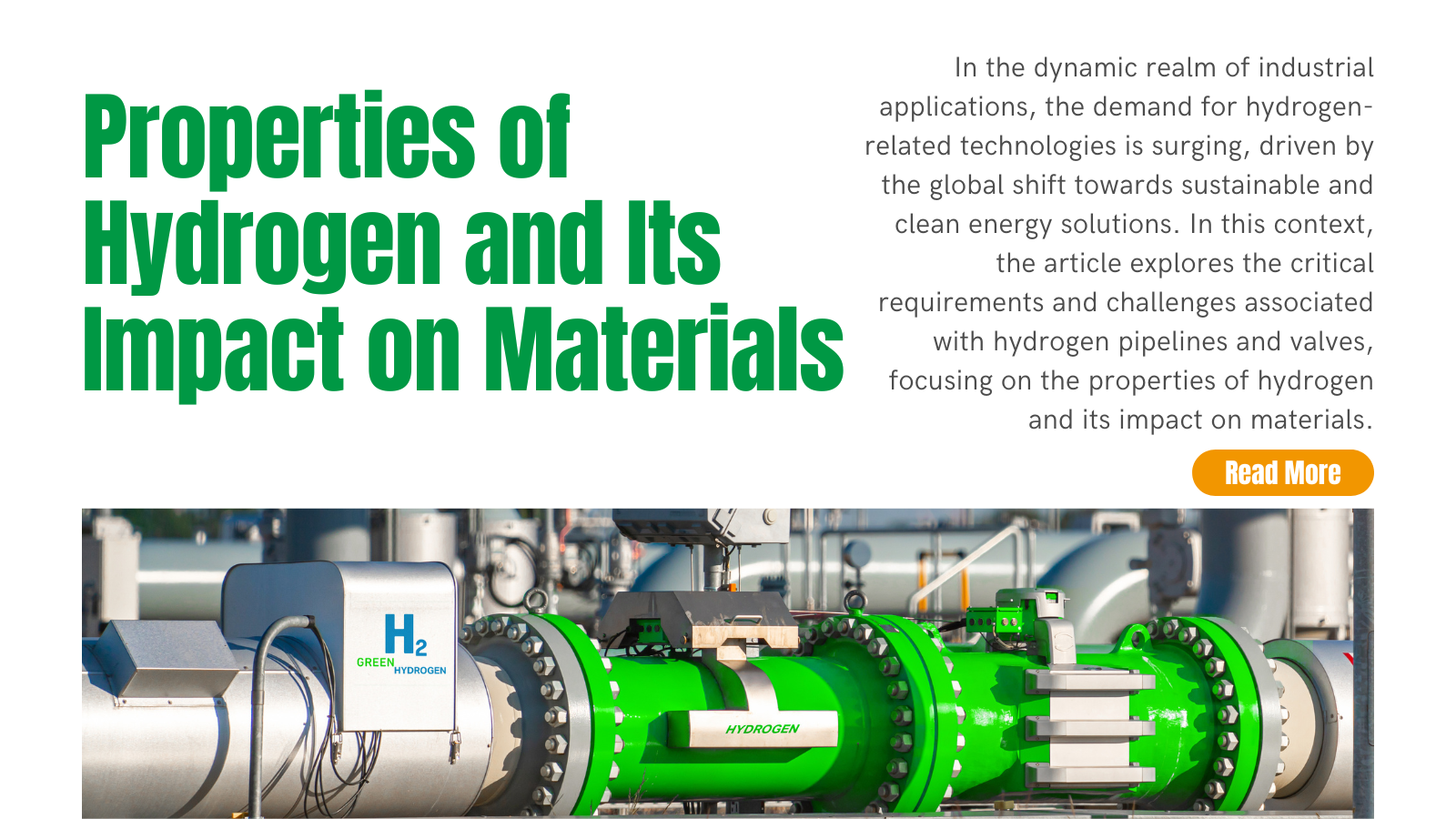Requirements for Hydrogen Pipelines and Valves (Part 1) - Properties of Hydrogen and Its Impact on Materials

In the dynamic realm of industrial applications, the demand for hydrogen-related technologies is surging, driven by the global shift towards sustainable and clean energy solutions. In this context, the article explores the critical requirements and challenges associated with hydrogen pipelines and valves, focusing on the properties of hydrogen and its impact on materials.
As we delve into the intricacies of hydrogen's physical and chemical characteristics, we uncover the complexities that industries face in ensuring the integrity and safety of materials in hydrogen-rich environments. From the potential dangers of hydrogen's flammability to its intricate role in processes like steel annealing, each aspect demands a meticulous understanding for secure industrial applications.
While INOX-TEK is currently in the developmental phase of hydrogen-related products, this exploration serves as a prelude to the company's commitment to innovation. Positioned at the forefront of research and development, INOX-TEK anticipates the future needs of industries involved in hydrogen applications, striving to deliver advanced solutions that align with global energy sustainability goals. As we navigate the nuances of hydrogen's interaction with materials, let's uncover the innovative journey that lies ahead, with INOX-TEK leading the charge in shaping the future of hydrogen technologies.
Properties of Hydrogen
Physical Properties:
Hydrogen (H2) is a flammable gas with properties making it a hazardous chemical. Under standard conditions (at standard atmospheric pressure/760mm Hg), hydrogen is colorless, odorless, non-toxic, non-corrosive, yet highly permeable. Its density is 0.09kg/m3, lighter than air. Hydrogen is slightly soluble in water, ethanol, and ether.
Chemical Properties:
Flammability:
ydrogen is highly flammable, burning with a faint blue flame and releasing heat. Its flame is transparent, making it hard to detect. The flame temperature of hydrogen-oxygen combustion is 2100-2500℃, with explosion limits in air (4.2%-74%) and oxygen (5.0%-94.3%). Mixtures with fluorine, chlorine, or carbon monoxide pose an explosive risk.
Reduction:
Hydrogen's strong reduction capabilities are utilized in steel industries for protection during stainless and carbon steel cold rolling. It prevents oxidation and reduces rust on steel, ensuring bright annealing.
Impact of Hydrogen on Metal Materials
Hydrogen Embrittlement:
Defined as hydrogen diffusing into the metal, causing internal pressure and resulting in surface blistering or even rupture. It's more common in low-strength steels, especially those with non-metallic impurities.
Corrosive Environment for Hydrogen Blistering:
Environments containing toxins like hydrogen sulfide, arsine compounds, cyanides, or phosphorus ions promote hydrogen blistering. Preventive measures include eliminating toxins, selecting low hydrogen permeability steels, or using materials with low hydrogen permeability linings.
Hydrogen Embrittlement Avoidance:
- Choose materials less sensitive to hydrogen embrittlement, such as alloys with Ni and Mo.
- Minimize hydrogen infiltration by using inhibitors in pickling baths, employing chemical or solvent degreasing, or using low hydrogen diffusion coatings.
- Use coatings with low hydrogen diffusion and solubility. Certain metal coatings like Cu, Mo, Al, Ag, Au, and W have low hydrogen diffusion and solubility.
Hydrogen Attack:
Defined as hydrogen entering metal in high-temperature, high-pressure conditions, reacting chemically, and causing metal degradation. Preventive measures involve selecting hydrogen-resistant steel, such as 16MnR (HIC), 15CrMoR, 14Cr1MoR, 2Cr-0.5Mo, 2.25Cr-1Mo, 2.25Cr-1Mo-0.25V, and 3Cr-1Mo-0.25V.
Conclusion:
While INOX-TEK is currently in the developmental phase for hydrogen-related products, the company stands at the forefront of innovation in this domain. Our ongoing research reflects our commitment to staying ahead in technology and addressing emerging needs in the field of hydrogen applications.
Company Advantages:
INOX-TEK brings several strengths to the table, including:
- Research Prowess: Our dedicated research teams are actively working towards creating cutting-edge solutions for hydrogen pipelines and valves.
- Commitment to Excellence: With a commitment to excellence ingrained in our culture, we strive to deliver products that not only meet industry standards but set new benchmarks.
- Green Energy Initiative: INOX-TEK is aligned with the global push towards green energy solutions. Our hydrogen-related endeavors contribute to the sustainable and eco-friendly initiatives in the energy sector.
As the world increasingly turns towards hydrogen as a clean energy source, INOX-TEK positions itself as a key player, anticipating and responding to the evolving landscape of energy technologies.
